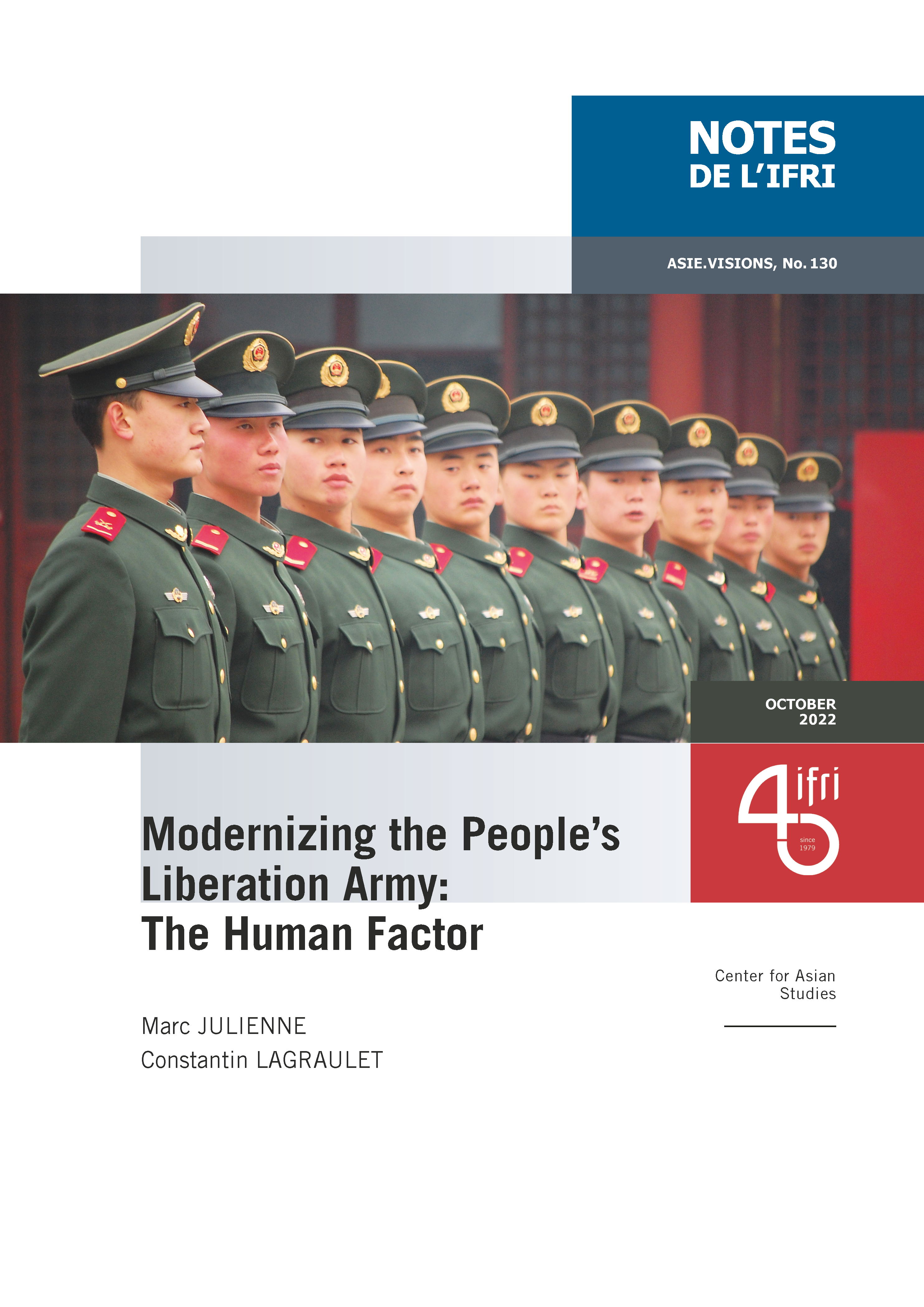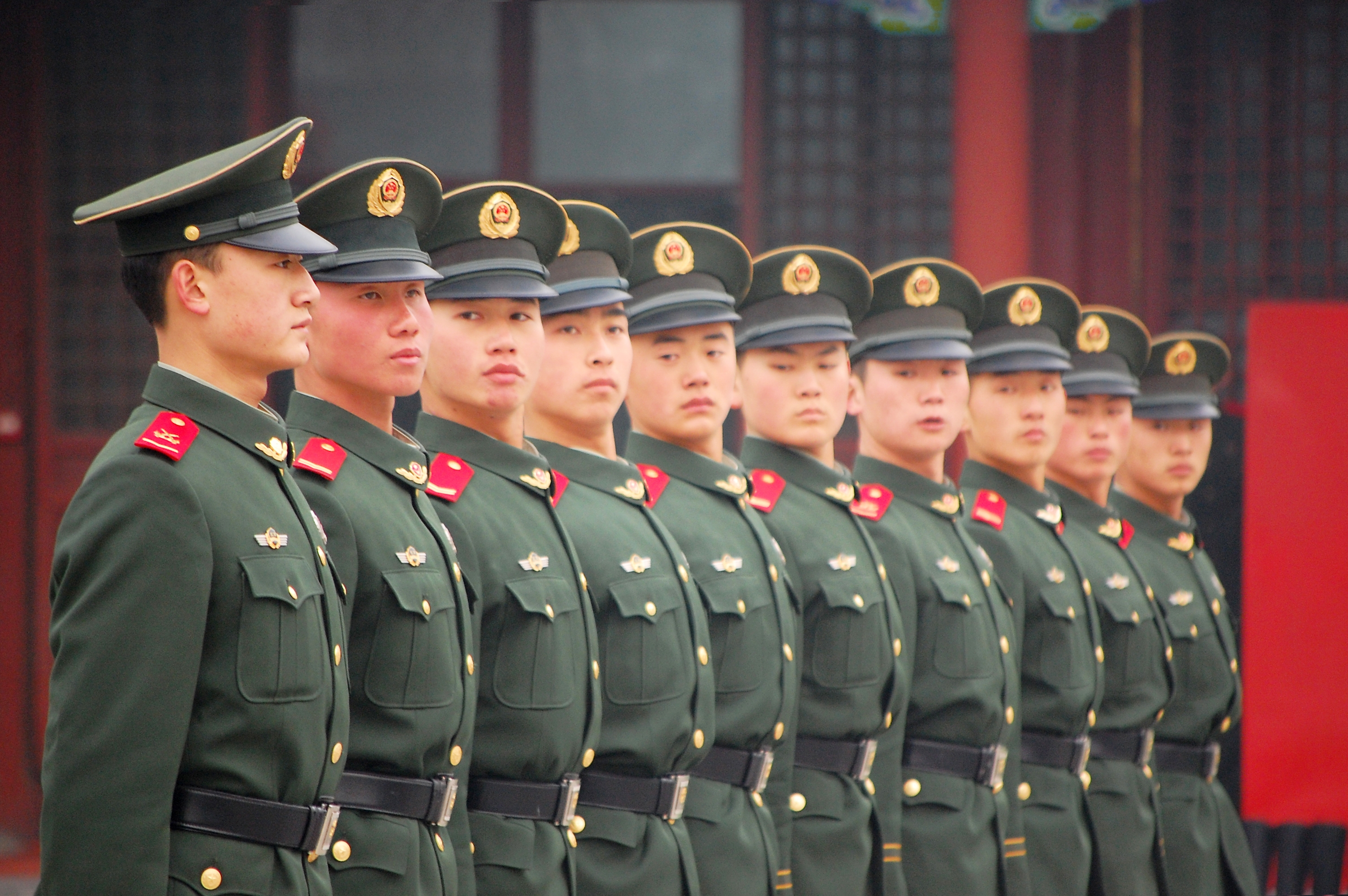Modernizing the People's Liberation Army: The Human Factor

The tremendous demographic challenges facing China will not significantly affect the People’s Liberation Army (PLA) in the immediate future, but will become more problematic in the medium and long term. The rapid aging of the population and the resulting socio-economic imbalances will put pressure on defense budgets, military wages and the general attractiveness of the army. For the time being, the PLA’s primary goal in terms of human resources is to build a less oversized, more professional army, prepared for high-intensity combat.

This objective is in line with the institutional reform of 2016, which shortened the chain of command and strengthened the political and ideological control of the Communist Party of China (CPC) over the PLA through an overhaul of the Central Military Commission (CMC).
This reform also involved a major restructuring of China’s armed forces. The PLA is pursuing a streamlining target that emphasizes quality over quantity. This qualitative improvement concerns equipment, forces and chains of command, and is driven by the need to elevate modernity, operational effectiveness and interoperability. An analysis of the evolution of the PLA Navy Marine Corps and the People’s Armed Police (PAP) demonstrates this qualitative upgrading trend and the prioritization of combat readiness.
To integrate increasingly modern and complex equipment, the PLA is also focusing on recruiting and retaining young conscripts and volunteers with a high level of education, in order to increase the number of commissioned and non-commissioned officers. The major reforms being carried out thus aim to enhance the status of the military so as to strengthen its economic and social attractiveness. On the other hand, the PLA, like other armies around the world, is confronted with societal phenomena such as internet addiction, near-sightedness and obesity, which hinder its ambitions and force it to make trade-offs in its selection standards.
Download the full analysis
This page contains only a summary of our work. If you would like to have access to all the information from our research on the subject, you can download the full version in PDF format.
Modernizing the People's Liberation Army: The Human Factor
Related centers and programs
Discover our other research centers and programsFind out more
Discover all our analyses
RAMSES 2024. A World to Be Remade
For its 42nd edition, RAMSES 2024 identifies three major challenges for 2024.
France and the Philippines should anchor their maritime partnership
With shared interests in promoting international law and sustainable development, France and the Philippines should strengthen their maritime cooperation in the Indo-Pacific. Through bilateral agreements, expanded joint exercises and the exchange of best practices, both nations can enhance maritime domain awareness, counter security threats and develop blue economy initiatives. This deeper collaboration would reinforce stability and environmental stewardship across the region.

The China-led AIIB, a geopolitical tool?
The establishment of the Asian Infrastructure Investment Bank (AIIB) in 2016, on a Chinese initiative, constituted an attempt to bridge the gap in infrastructure financing in Asia. However, it was also perceived in the West as a potential vehicle for China’s geostrategic agendas, fueling the suspicion that the institution might compete rather than align with existing multilateral development banks (MDBs) and impose its own standards.
Jammu and Kashmir in the Aftermath of August 2019
The abrogation of Article 370, which granted special status to the state of Jammu and Kashmir (J&K), has been on the agenda of the Bharatiya Janata Party (BJP) for many decades.








